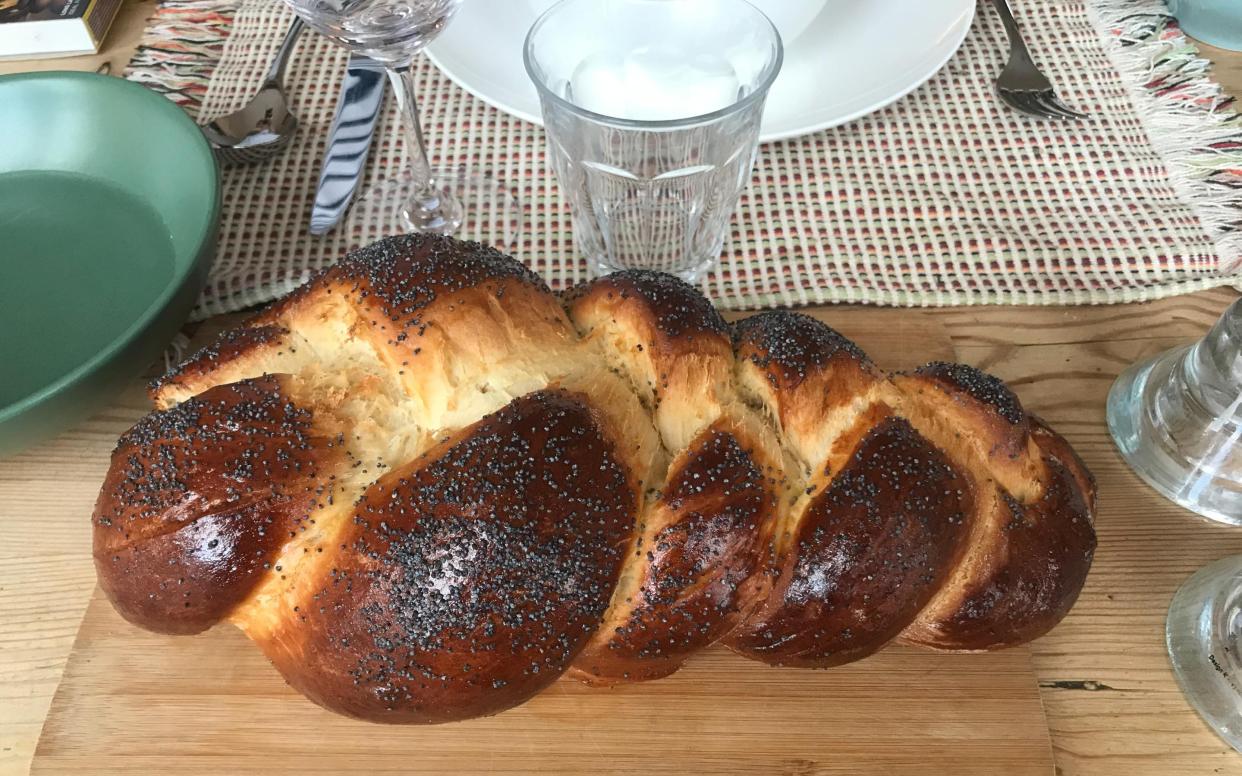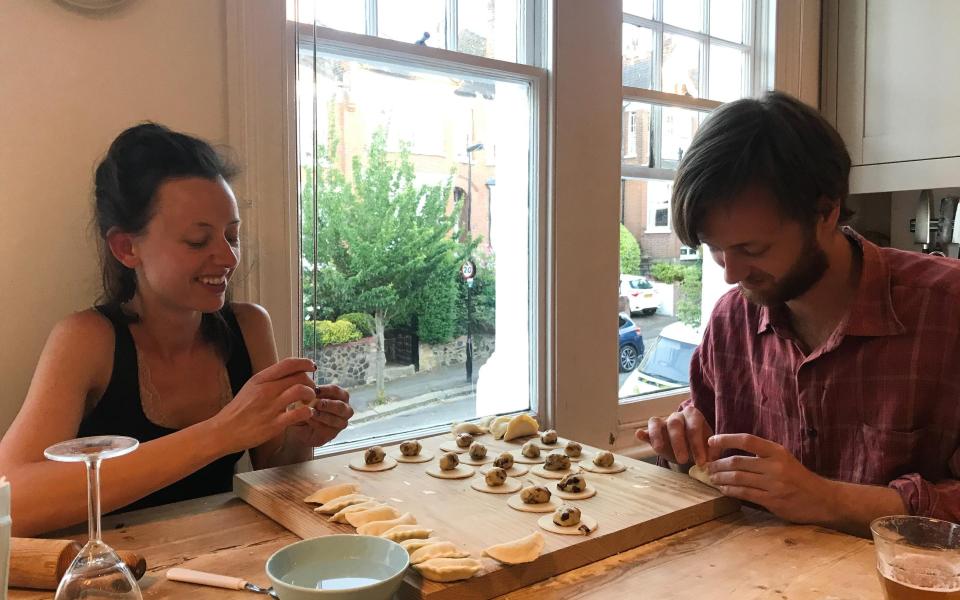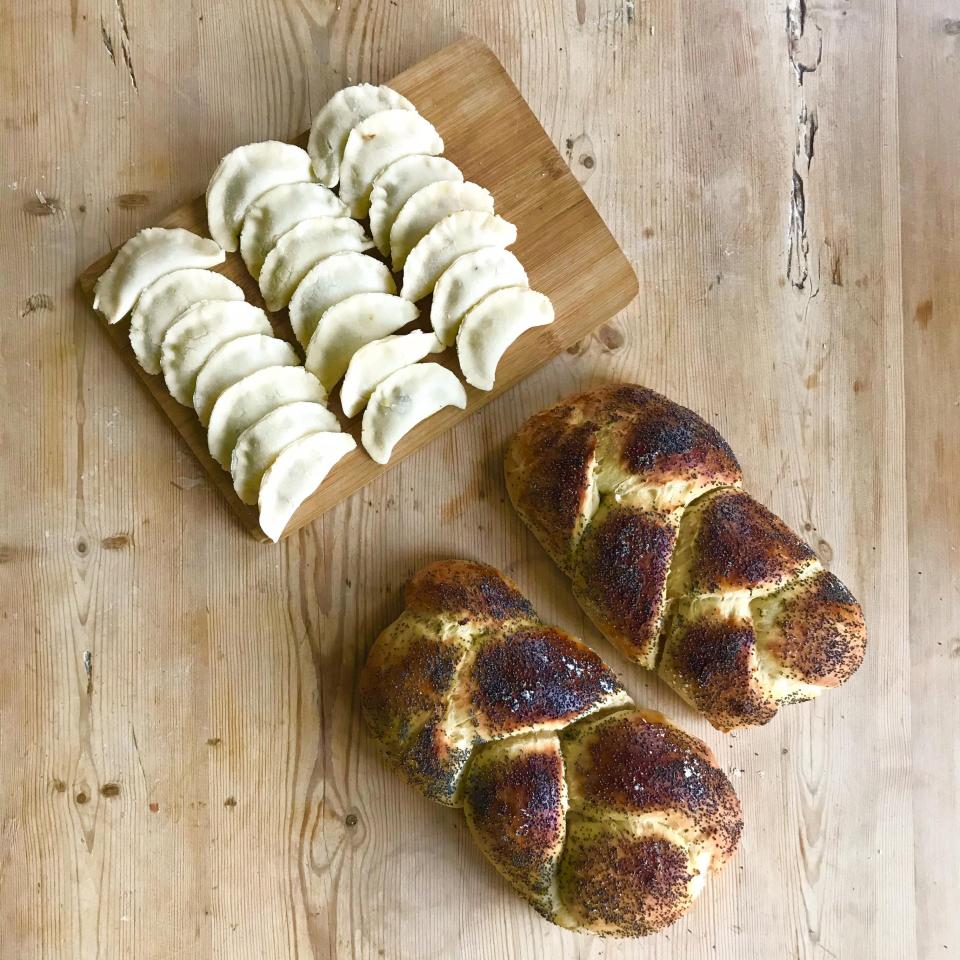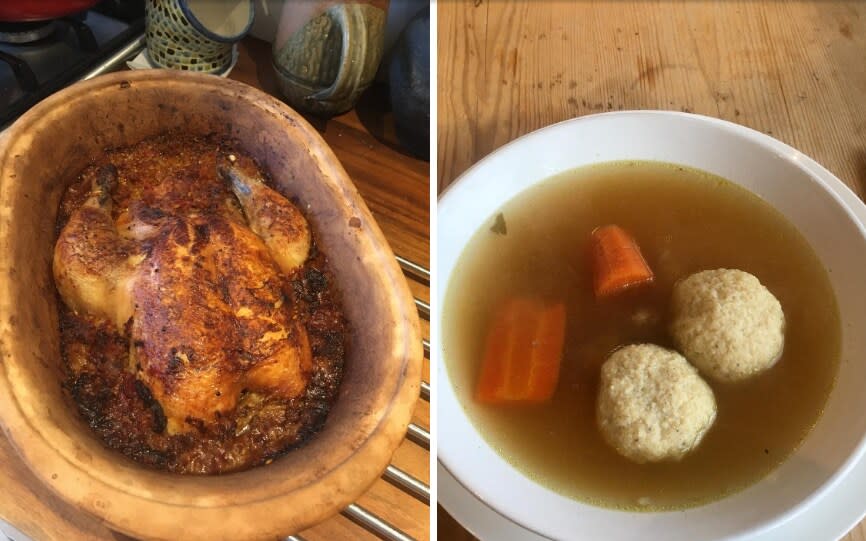How my lockdown Friday night dinners helped me feel closer to my family, and our Jewish heritage

“It’s pronounced ‘challah’, not ‘shallah’,” I insist to my family as our preparations begin. It’s early June, we’re still under lockdown, and everyone is just a bit fed up. Yet every Friday evening we temporarily forget the pandemic, if just for a couple of hours. Though we eat together every other day this feels different. This time, we share challah.
We’ve never been a religious family, neither particularly ritualistic, aside from Christmas in all its pageantry. Under lockdown my mother, Marcia, my sister Julia, and I found ourselves living together for the first time in a decade. At times it was tense; suddenly the flat seemed so small. But then Friday night arrived, the week’s tribulations cast aside by a bowl of simmering, shimmering chicken soup.
Neither have we ever properly explored our Jewishness. My grandmother Marysia was born and raised in Warsaw; the long arm of the Holocaust meant she, heartbreakingly but understandably, rarely wanted to discuss it. My mother, raised Catholic (my grandmother married a Brazilian of Anglo-Irish origin) didn’t fully know about her mother’s experience in Poland until she was 17. By the time I was old enough to pay attention, Vovó ('grandma' in Portuguese) had sadly left us. It felt like something denied.
But the kernels have always been there, and those kernels were food. As a child, my mother’s dinner table was replete with Polish delicacies. It was hard for my grandmother to speak her truth; easier, perhaps, to demonstrate it on the dinner table with her favourite things: potato salads and kotleti, pierogies and walnut cakes, schnitzels and noodles.

An interest in the past has travelled with the generations. At university I focused on Jewish history, and I’m entirely powerless before a clarinet. But I’ve always been drawn most to the food. Yet, in lockdown it became something more deep-rooted, perhaps out of necessity. As a family we were subconsciously looking for something to bring us together.
Every Friday we make Jewish classics, often involving slow-cooked meats bubbling away all day. Come dinner time, we light the candles and recite the kiddush (blessing over the wine) and hamotzi (the bread). Then Mum tears the challah, salts it, and we dip it into the soup.
There’s always chicken soup with matzo balls, arguably the most famous Ashkenazi dish. There’s an old adage about two Jews having three opinions; they might well have four recipes for chicken soup. Each family has its method and ours changes weekly. There’s always chicken, of course, and onion, celery, garlic and carrot, but anything else lying in the fridge may sneak its way in. Sometimes it’s topped with a sprinkling of chopped parsley, but more often we use dill.
It’ll be served with matzo balls, which can be dense and chewy but preferably light and fluffy; mine are still hit and miss. And challah makes the perfect mop to sponge the glistening broth. By now I’m full, but much like Christmas, there’s still work to be done.

We vary the mains. Inspired by a wonderful 1920s book on Polish-Jewish recipes, filled with carp and tongue and calves’ heads, we cooked the more accessible cholent. It’s more a method than a dish, involving very slowly cooking meat or vegetables normally meant for the next day’s Shabbat lunch (to circumvent rules on cooking on the Sabbath). I fried beef ribs in goose fat before slow-cooking them with carrots, onions and paprika until they collapsed, resulting in a gelatinous plate of complete comfort – with added mash.
Another evening we slow-roasted a chicken for 12 hours, on a bed of rice to soak the juices, following an Iraqi recipe in Leah Koenig’s The Jewish Cookbook – it pulled apart as easily as an overripe banana, and that was just the bones. Wonderful. On another occasion, braised chicken with mint and carrot, from an Indian-Jewish recipe, also impressed.
Many people have turned to comforting, nostalgic, or heritage foods during lockdown. It’s no surprise, as behavioural psychologists explore links between comfort food and wellbeing. Eating that reminds us of a cherished time or place can elicit feelings of happiness, much needed in times of distress.
What actually is Jewish food? It’s a burning question I’ve long pondered. On a surface level, we know, or think we know – salt beef or smoked salmon and cream cheese bagels; chicken soup; wonderful, glorious potato latkes. Yes, but it’s so much more. These represent a rather Ashkenazi-centric picture common in Britain and the US, one that doesn’t take into account the rich Sephardi history, for example, or that of Ethiopian or Middle Eastern Jewish communities.

Wanting to find out more, I asked several friends and acquaintances, whose answers were beautifully diverse and nuanced. One told me it was “deeply personal”, and sweeping generalisations could never tell the whole story.
Another, who grew up in an orthodox household, made an interesting distinction between kosher and Jewish food. “I think of ‘Jewish food’ as referring to either the traditional dishes that our ancestors ate, or what is eaten as part of the customs of a Jewish festival or ceremony. Kosher food is any food which conforms to the dietary requirement of Jewish law. Thus the food we ate every day was kosher, but it wasn’t necessarily ‘Jewish’”.
For Koenig, Jewish food is “any dish that has religious, cultural or familial significance to a Jewish community.” This makes it a fluid concept, one that takes in the full range of diaspora experiences and one that has the capacity to evolve. “The key thing to remember, I think, is that most Jewish foods are ‘Jewish and…’” Koenig points to borscht, for example, which in New York is considered a Jewish deli staple, but not in Ukraine. “That does not erase the dish’s Ukrainian identity, it simply expands it.”
Claudia Roden writes that, for many Jews who weren’t religious, food became “one of the things that they held onto to remind themselves of who they were, of their past and ancestry.” This strikes a chord. I don’t speak Yiddish or Hebrew and never attended synagogue, but I feel a certain connection to my heritage when I spread chopped liver on toast. Roden uses the term “gastronomic Jew”, something Koenig also mentions; maybe it’s beginning to describe me.

Making challah isn’t easy. Many weeks, like most, we delegate this task to far more capable professional bakers; there are countless other culinary tasks, after all. But often we try. Plaiting the soft, spongy dough, brushing it with egg and sprinkling with sesame or poppy seeds, it’s placed in the oven to puff up into a sweet, brioche-y loaf. Sometimes it’s overly sweet and others are overdone.
But it’s about so much more than baking bread. It’s connecting to my mother, grandmother, and those who didn’t make it. It’s eating not only for fuel, but for culture and remembrance. When I dip a piece into the soup, I don’t merely think of its deliciousness, but of family and history – my family’s history.
Now that my sister has moved to her boyfriend’s in France, our Shabbat has switched to Zoom. The candles are still lit, the bread still torn and dunked into soup, the family still bonding.
Jewish food is replete with symbolism: on Passover matzah represents the unleavened bread eaten by the Israelites fleeing Egypt; the Chanukah latkes fried in oil for the lamp that miraculously lasted eight days. I didn’t realise until lockdown, but there’s symbolism for me, too. Bringing me closer to my grandmother, to my ancestors, to cousins I’ve never met, to an alternate history that might have been.


